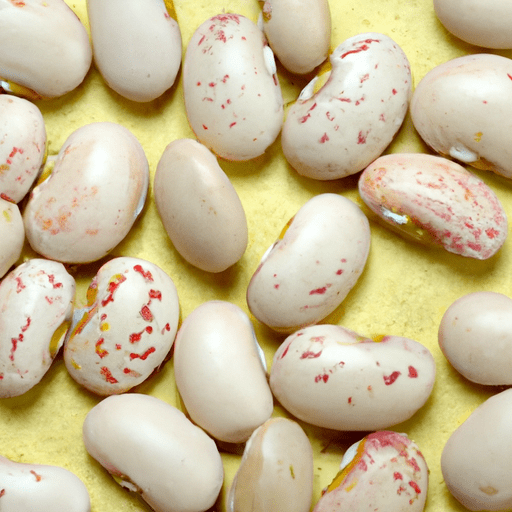Discover the Versatility of Dried Lima Beans
If you’re looking to add a nutritious and versatile ingredient to your pantry, look no further than dried lima beans. These little legumes offer not only a delightful taste but also a remarkable variety of uses in the culinary world. Whether you’re a seasoned chef or a cooking enthusiast, dried lima beans deserve a place in your kitchen. Let’s dive into the details of these amazing beans, from their taste profile and common cooking applications to their nutritional value and intriguing history.
Taste Profile and Texture
Dried lima beans, also known as butter beans, are renowned for their smooth, creamy texture and mild, buttery flavor. These characteristics make them a perfect addition to numerous recipes, enhancing both taste and mouthfeel. The creamy texture, coupled with a slightly nutty undertone, allows them to marry well with a wide range of flavors and spices.
Common Uses in Cooking
Lima beans are extremely versatile, compatible with both savory and sweet dishes. They can be incorporated into salads, soups, stews, casseroles, and even transformed into delicious spreads and dips. Moreover, they can be cooked as a standalone side dish or combined with other legumes for a wholesome and nourishing meal.
One popular dish featuring dried lima beans is succotash, a Southern American specialty that typically includes corn, tomatoes, onions, and bacon. Whether mashed, pureed, or left whole, lima beans bring a unique creaminess and richness to this dish.
Another classic application for dried lima beans is in hearty vegetable soups and stews. Their soft texture and ability to absorb flavors make them a perfect addition to these comforting dishes. Add some diced vegetables, herbs, spices, and stock, and you’ll have a wholesome and satisfying meal.
Let’s not forget about dips and spreads! Mashed lima beans make a fantastic base for creamy dips. Mix them with garlic, lemon juice, and olive oil to create a flavorful hummus-like spread. Alternatively, blend them with your choice of spices and herbs to make a scrumptious bean dip.
Nutritional Value
Besides their delightful taste and culinary versatility, dried lima beans are also packed with nutritional goodness. They are an excellent source of plant-based protein, making them a fantastic choice for vegetarians and vegans. Additionally, lima beans are naturally high in fiber, aiding digestion and promoting a healthy gut.
These beans are also rich in essential minerals such as iron, magnesium, and potassium. Iron is crucial for transporting oxygen throughout the body, while magnesium and potassium contribute to maintaining regular blood pressure and promoting healthy nerve and muscle function.
Historical and Interesting Facts
Lima beans have a fascinating history dating back thousands of years. Native to Central and South America, they were cultivated by ancient civilizations such as the Incas and Mayans. As exploration and trade routes expanded, lima beans found their way to Europe and other countries, spreading their popularity worldwide.
Interestingly, the name “lima” originated from the capital city of Peru, Lima, where these beans became a staple in the local cuisine. In the early 19th century, lima beans gained recognition in the United States, specifically in the regions of California and the southern states, where they continue to be cherished today.
In Summary
Dried lima beans, with their creamy texture, mild flavor, and remarkable versatility, serve as a delightful addition to any culinary repertoire. Whether you use them in soups, stews, salads, dips, or standalone dishes, these legumes bring a unique creaminess and nutritional richness to every bite. So why not explore the world of dried lima beans and elevate your cooking to new heights?
Dried Lima Beans
Origin and History: Lima beans, also known as butter beans, are native to Central and South America. They have been cultivated for thousands of years and were an important staple in the diet of ancient civilizations, including the Incas and Mayans.
Common Uses: Dried lima beans are often used in soups, stews, and casseroles. They can also be cooked and mashed to make a creamy dip or spread. In some countries, such as Brazil, lima beans are roasted and used as a snack.
Nutritional Benefits: Lima beans are a good source of fiber, protein, and essential nutrients. They contain significant amounts of folate, iron, magnesium, and potassium. Additionally, they are low in fat and cholesterol-free.
Unique Properties: Lima beans have a smooth, buttery texture and a delicate flavor. When cooked, they have a tendency to absorb the flavors of other ingredients in a dish, making them a versatile addition to various recipes. They are often used as a vegetarian substitute for meat due to their high protein content.
Historical Significance: Lima beans were introduced to Europe in the 16th century by Spanish explorers who brought them back from their travels in the New World. They quickly gained popularity and became a significant part of European cuisine. In the United States, lima beans were grown extensively during World War II as a way to increase food production and provide a nutritious source of sustenance.
Please note that if you are planning to consume dried lima beans, they should be soaked and cooked thoroughly to neutralize certain enzymes and compounds that may cause digestive discomfort if consumed raw or undercooked.




Use the share button below if you liked it.
It makes me smile, when I see it.